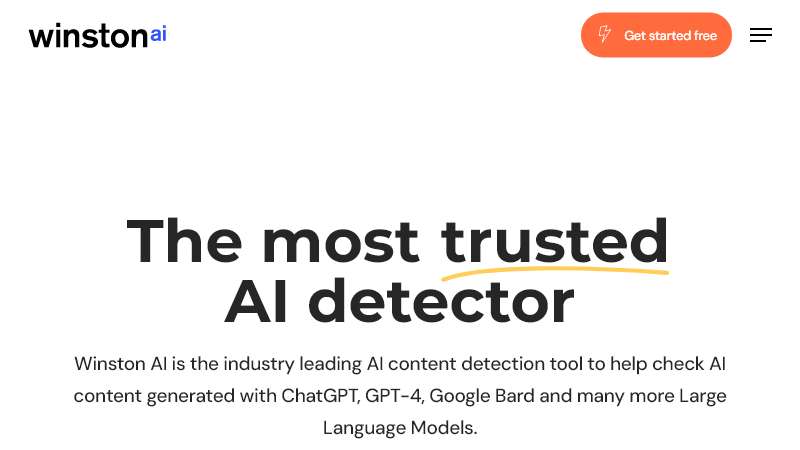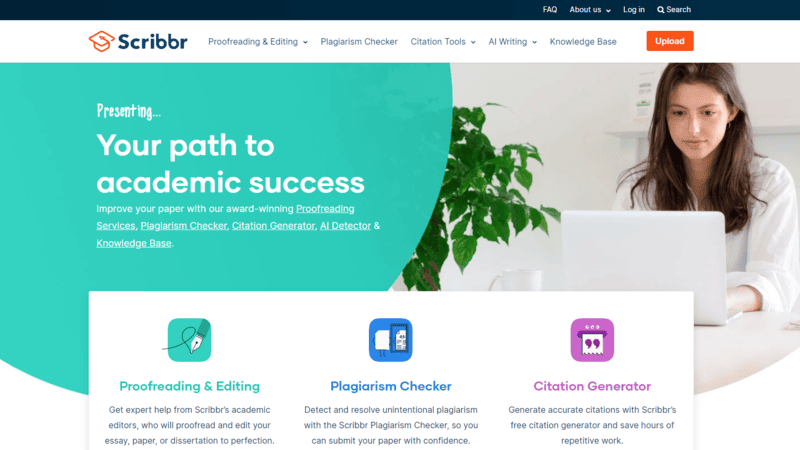- Updated:4/10/2025

AI Content Detection Algorithms – Originality AI
Originality AI is an AI content detection tool that utilizes advanced algorithms to detect and flag AI-generated content. With the rise of Artificial Intelligence (AI) in content creation, there has been a growing concern regarding the potential for cheating and fraud. To address this issue, AI content detection tools have been developed, leveraging algorithms specifically designed to identify AI-generated content. Although still in the early stages of development, these tools have shown promise in deterring students from manipulating AI writing tools to fabricate essays, papers, and dissertations.
Language Models and AI Content Detection
A language model is an AI algorithm trained to predict the next word in a sequence. It achieves this by analyzing vast amounts of text data and leveraging probability to determine the most likely outcome. Language models are integral components of AI writing tools as they enable the generation of content. Additionally, the same capability makes them invaluable for detecting AI-generated content, as it takes one to know one!
AI Detection Models
BERT
BERT (Bidirectional Encoder Representations from Transformers) is an AI language model developed by Google researchers in 2018. It utilizes a bidirectional approach to language modeling, considering the context of both preceding and succeeding words to make predictions. BERT is trained on two tasks: Masked Language Modeling (MLM) and Next Sentence Prediction (NSP). MLM involves masking a word in a sentence and predicting it by considering the surrounding words. NSP enables the model to learn sentence relationships by predicting if a given sentence follows the previous one. BERT is specifically trained on datasets from Wikipedia and Google's BookCorpus.
RoBERTa
RoBERTa (Robustly Optimized BERT Approach) is an optimized version of BERT developed by Facebook's AI research team. It is trained on a larger dataset of over 160GB of text, surpassing BERT. RoBERTa incorporates a training task called Dynamic Masking, where multiple words in a sentence are masked, and the model predicts the best-fitting masked word based on the context of all the masked words. It also has a longer maximum sequence length, allowing it to handle more data than BERT and perform better with longer text passages such as essays, papers, and dissertations.
GPT-2
GPT-2 (Generative Pre-trained Transformer 2) is an AI language model released by OpenAI in 2019. Trained on a dataset of 8 million web pages, it is based on a transformer model architecture and trained with the Causal Language Modeling (CLM) objective. CLM involves predicting the next word in a sequence based on previous words. GPT-2 can maintain coherence and relevance to previous words, making it suitable for generating text. Some AI content detectors, such as GPTZero and GPT-2 Output Detector, have utilized the GPT-2 model for their algorithms.
GPT-3
GPT-3 (Generative Pre-trained Transformer 3) is one of the most powerful AI algorithms available today. Released by OpenAI in 2020 as a successor to GPT-2, GPT-3 is trained on an extensive dataset of 45 TB of text data. It is the largest and most powerful natural language processing (NLP) system ever created. GPT-3 is an unsupervised learning algorithm, meaning it can learn from unlabeled text data without requiring specific labels for each piece of data. This makes it well-suited for tasks such as machine translation and question-answering. Compared to GPT-2, GPT-3 has implemented strategies to reduce toxic language, resulting in fewer malicious results.
AI Text Classifier
OpenAI's AI Text Classifier is an AI content detection tool trained on both human-written text and AI-generated text. The human-written text sources include Wikipedia, WebText, and prompts from InstructGPT. Each sample of AI-written text is paired with a similar sample of human-written text. For example, random portions of articles from Wikipedia data were used to generate 1,000 tokens of AI text, which were then paired with the original human-written continuation. However, it is essential to note that this model is trained solely in the English language and may be less reliable for content below 1,000 characters. It is recommended to use additional assessment methods to determine AI plagiarism.
Conclusion
AI content detection algorithms serve the same purpose as AI content generation tools. These algorithms aim to identify AI-generated material by replicating the style and syntax of such content. They are trained on large datasets of publicly accessible data, including samples from AI-generated content. AI content detection tools, like OpenAI's Originality AI, utilize advanced algorithms such as BERT, RoBERTa, GPT-2, GPT-3, and the AI Text Classifier to detect and flag AI-generated content. These tools are still in the early stages of development but show promise in deterring cheating and fraud in academic and professional settings.
Trending topics
Find the Perfect AI Tool for Your Needs
Discover powerful AI solutions curated by experts in the field





